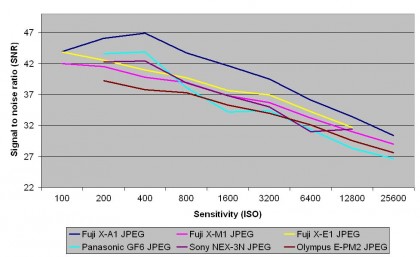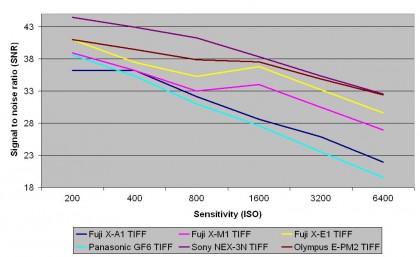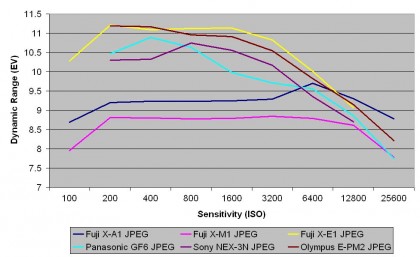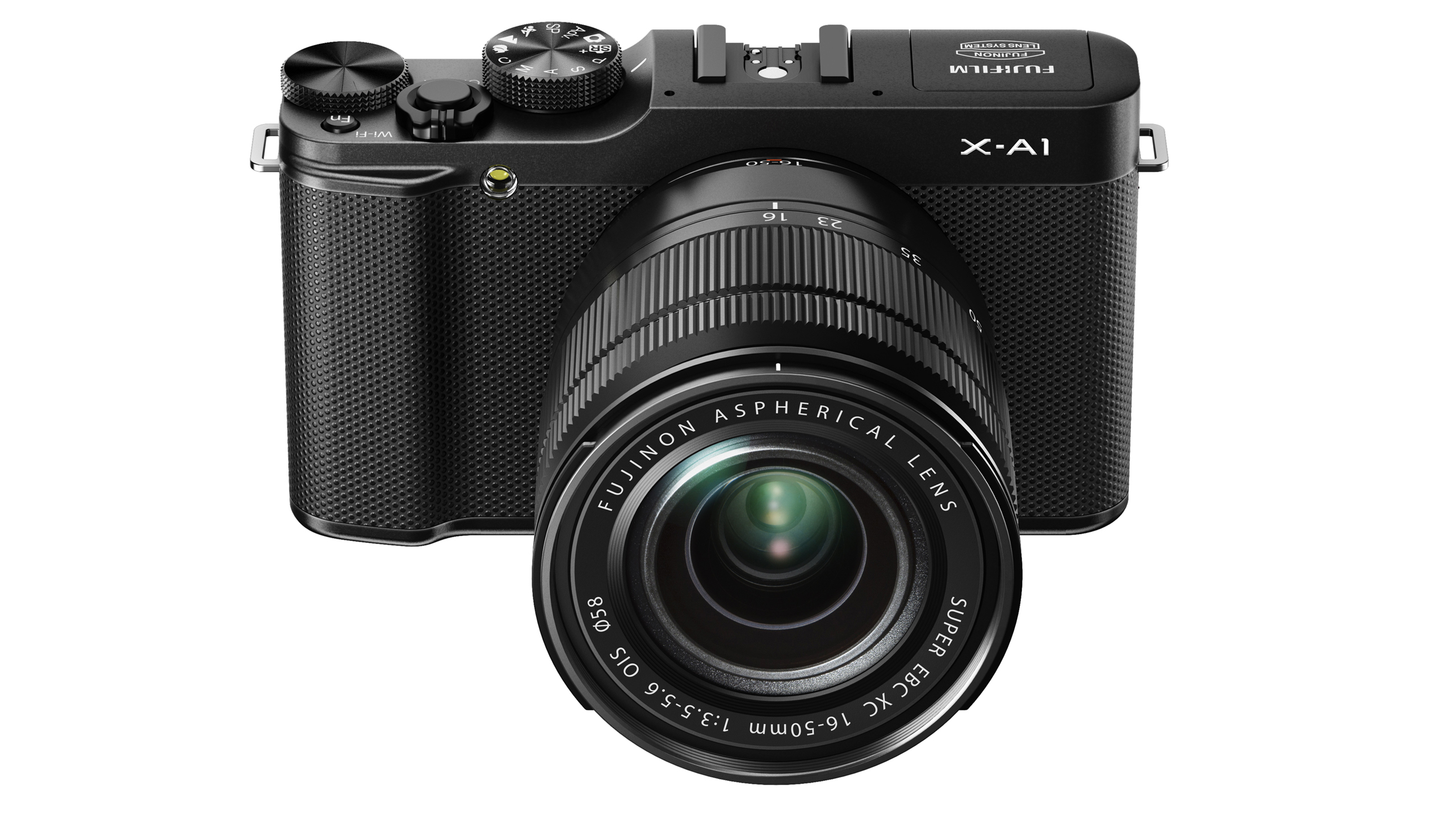Why you can trust TechRadar
JPEG signal to noise ratio

This graph indicates that the Fuji X-A1 produces the cleanest JPEG images with least noise in this collection of cameras. However, the raw (after conversion to TIFF) signal to noise ratio results don't compete so well with those from the other cameras, suggesting that Fuji does a better job of concealing the noise in its JPEGs. This matches fairly well with our real-world experience, in which the JPEGs look great at normal printing sizes but lack some fine detail when viewed at 100% on screen.
Raw signal to noise ratio (after conversion to TIFF)

After conversion to TIFF to Fuji X-A1's raw files contain more noise than the files from the comparison cameras. However, our real-world tests indicate that this noise is within acceptable limits, and while the X-A1's raw images (after conversion to TIFF) don't score as well as the Fuji X-M1's at ISO 3200 and ISO6400, the images still look good.
JPEG dynamic range

The Fuji X-A1's JPEGs have a fairly consistent dynamic range of just over 9EV for most of its sensitivity range. While this is not the highest range we have measured, it's better than the X-M1 and we didn't find the camera's dynamic range was unduly restricted when we used it for real-world photography. Generally speaking the X-A1 produces images with a nice level of contrast.
Raw dynamic range (after conversion to TIFF)

While the X-A1's raw files (after conversion to TIFF) have a higher dynamic range than the JPEGs (as we would expect), they don't achieve the levels of the files from the Sony NEX-3-N, Fuji X-E1, Olympus E-PM2 and Fuji X-M1.
Sign up for breaking news, reviews, opinion, top tech deals, and more.
Current page: Noise and dynamic range
Prev Page Image quality and resolution Next Page Sample images